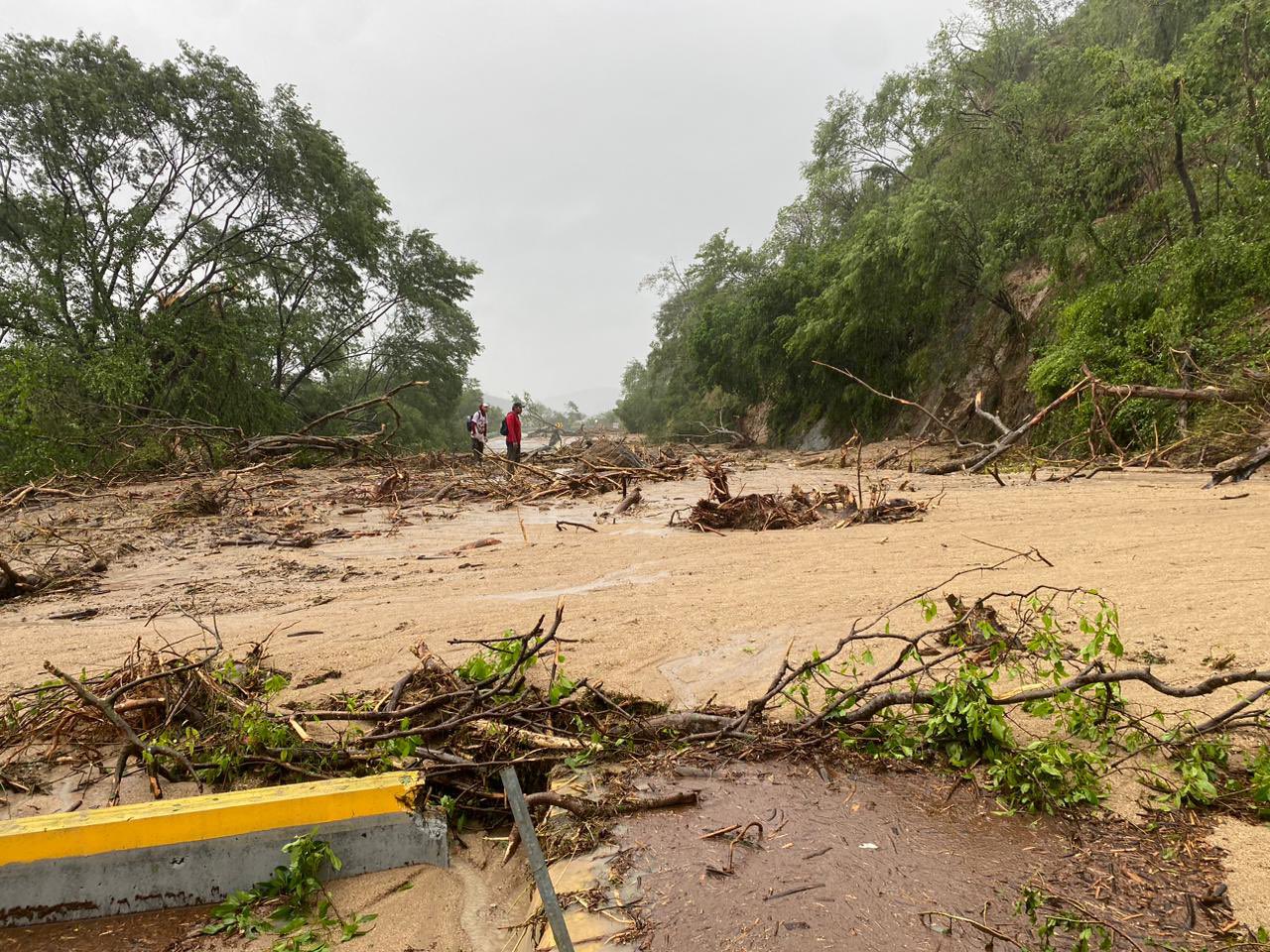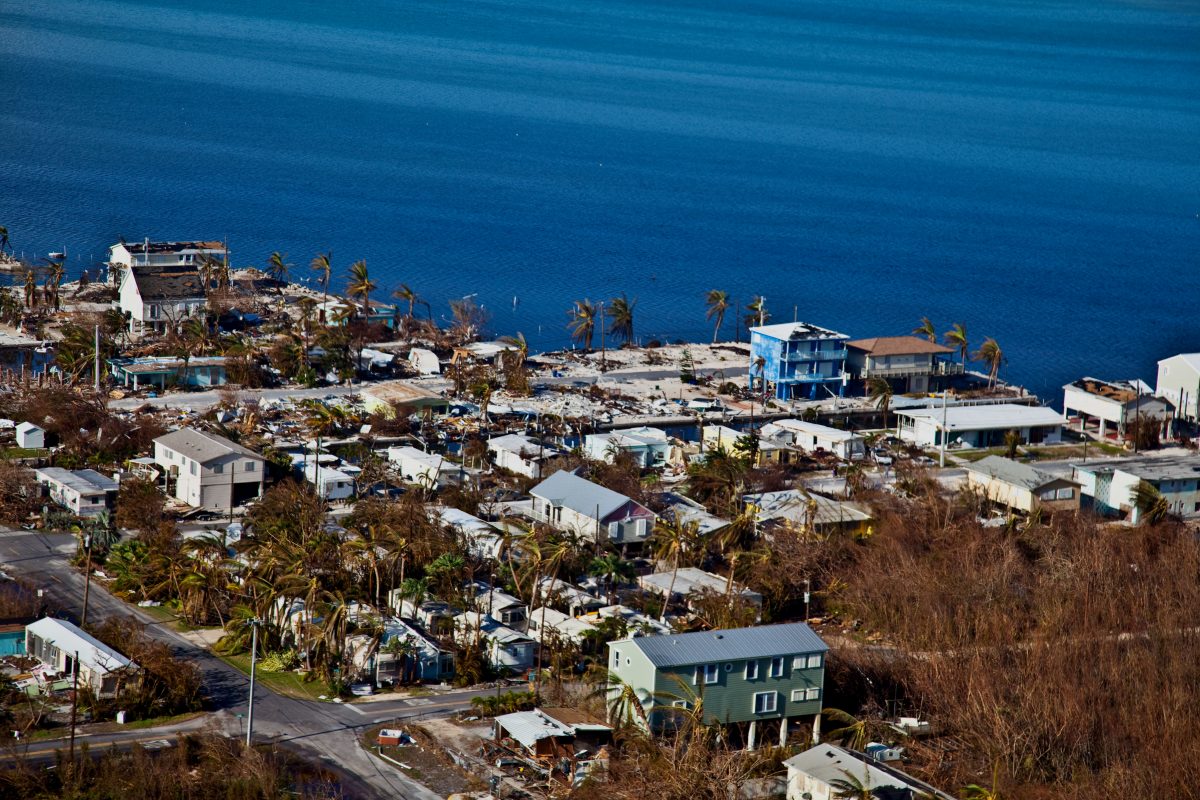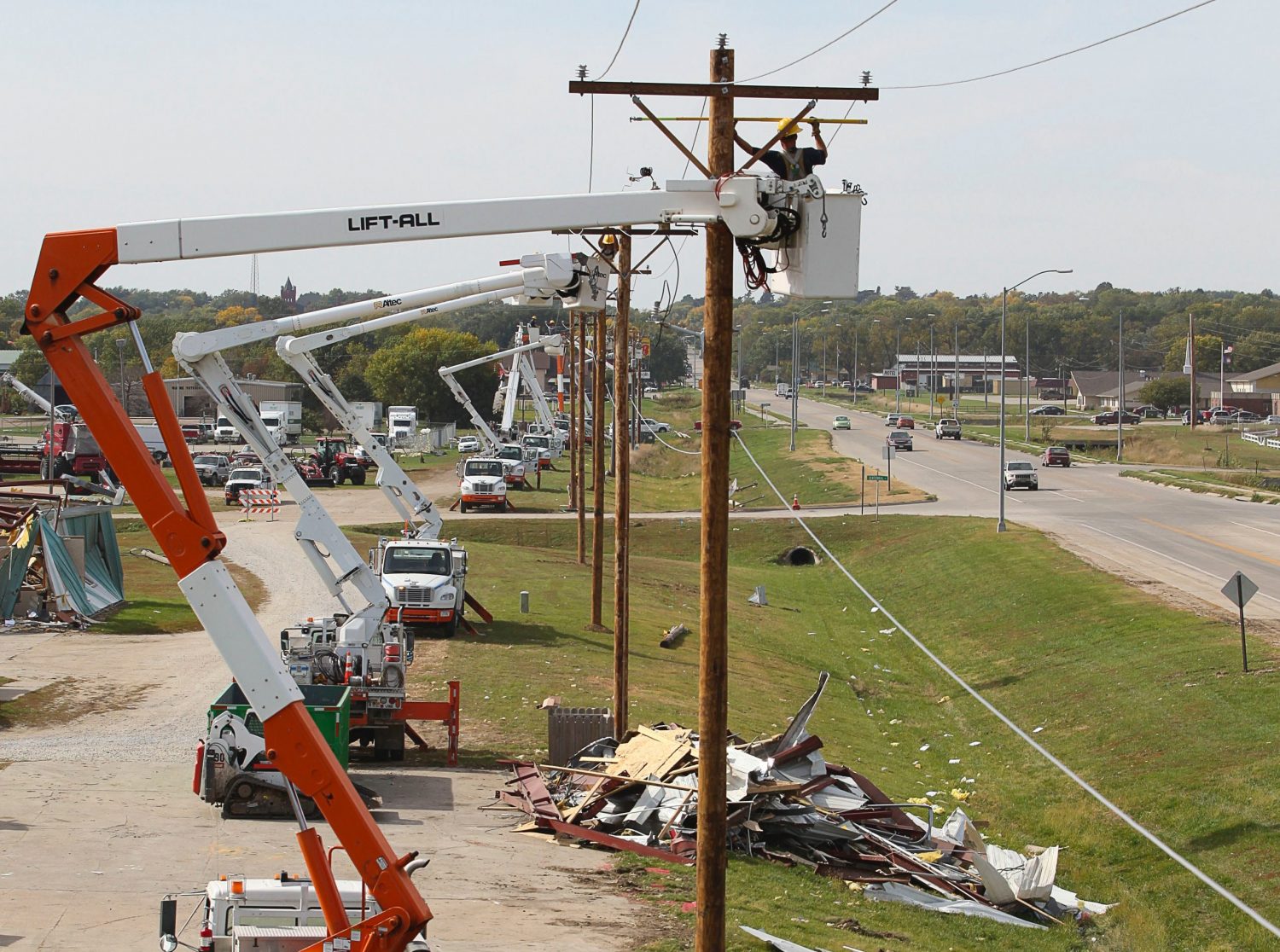

Hurricane Otis struck the Pacific coast of Mexico five miles south of Acapulco on Oct. 25, 2023, at 1:25 a.m. CT as a Category 5 storm with sustained winds of 165 mph, surpassing Hurricane Patricia as the strongest recorded hurricane to make landfall on Mexico’s Pacific coastline.
President Andrés Manuel López Obrador, expected impacted residents to fully recover by March 2024 and claimed that “The majority of people’s houses in Acapulco are now better than they were before the hurricane.”’
Unfortunately, four months after the storm, large amounts of debris, garbage and dust remained. Humanitarian partners like the United Nations Children Fund (UNICEF) conducted humanitarian response activities and only transitioned towards an early recovery phase in February 2024.
With approximately 60% of Acapulco living under the poverty line, in addition to resilient infrastructure and housing, a political and economic transformation addressing deep disparity between the urban and rural communities is imperative for equitable long-term recovery.
Due to Hurricane Otis’ catastrophic impact, the name was retired in 2024.
(Damage in Acapulco, Mexico after Hurricane Otis, Oct. 25, 2023. Credit: Jonatan Mendoza via X)
Otis underwent one of the fastest and strongest rapid intensification cycles – defined as an increase of 35 mph in a 24-hour period – ever witnessed, transforming from a tropical storm to a Category 4 storm in under 12 hours. Otis’ strength increased from 70 mph to 160 mph, growing to 165 mph before landfall. Hurricane Otis’ winds increased by 115 mph in 24 hours. The National Hurricane Center said the rapid intensification cycle was a “nightmare scenario.” Hurricane experts blame warm ocean temperatures due to climate change for the strength of Otis.
As Otis moved inland, the storm quickly dropped to a Category 1 hurricane and dissipated less than 18 hours after landfall. While a fast-moving system, Otis still caused extensive damage to the tourism industry and locals alike, including waist-high flooding and landslides as it moved into the mountains. In addition to the devastating impact on the economy, property and human lives, the storm also damaged the surrounding tropical forest.
As the main economic engine for the state of Guerrero, Acapulco, the beach resort, has historically garnered the majority of media coverage and resources. Meanwhile, Acapulco, the mountain community, has remained largely invisible, lacking many basic public services due to poor infrastructure and access to financial capital.
Unfortunately, community recovery efforts followed a similar pattern. By December 2023, most debris was removed, and businesses were operating along Acapulco’s coastal boulevard. However, in the mountains and hillsides surrounding the tourist center, 666,000 tons of garbage and debris clogged roadways and sidewalks and were at risk of creating a secondary public health disaster.
Existing socioeconomic and insecurity challenges that have simmered and long plagued the people of Acapulco may have also contributed to Hurricane Otis’s ability to lay waste to vulnerable communities.
Latest Updates

What we’re watching: Weekly disaster update, March 18

What we’re watching: Weekly disaster update, October 30
Key facts
- Hurricane Otis left at least 52 dead and 32 missing, though Acapulco’s chamber of commerce notes nearly 100 missing and many residents believe the death toll to be much higher. However, there is significant uncertainty regarding the confirmed death toll, and based on the number of people missing, the final death toll could be much higher.
- Over 250,000 homes were damaged in the state of Guerrero, and 51,000 homes were destroyed. Otis’s devastating impact left over 34,000 displaced households in over 600 emergency shelters.
- The government of Mexico issued an emergency declaration for municipalities Acapulco de Juarez and Coyuca de Benitez.
- Various estimates by disaster risk analysis firms indicated Otis caused $12-16 billion in damage in Mexico. This makes it the most expensive tropical cyclone and one of the costliest natural hazards for Mexico.
- On Nov. 1, 2023, Mexico’s government announced a $3.4 billion recovery plan to rebuild Acapulco, including humanitarian aid, tax breaks and infrastructure reconstruction.
- A photo essay from the Washington Post and a video from the New York Times both show the extent of the damage.
- The state of Guerrero is one of the most violent and poorest states in Mexico, with an average income of $5,000 compared to the national median of $8,000. The government sent 25,000 troops to Acapulco after the resort was hit by Hurricane Otis to stop gang violence and threats.
- Guerrero is a young and diverse state with almost 3.5 million residents, of whom 20% are Indigenous to the land and approximately 42% live in rural communities.
Disaster recovery is complicated and challenging by nature; in a community as complex as Acapulco, organizing and coordinating the major community constituents and leaders – political, business, environmental, etc. – to ensure that recovery is equitable and productive for all residents can be a monumental effort, especially without the financial capital and community wherewithal to enact collaboration and holistic community change.
This is where philanthropy can play a major role in partnering with local community organizations to reshape and revise recovery through a lens of equity, accessibility, and holistic community and economic development.
Health and behavioral health
Research shows that hurricanes cause and exacerbate multiple diseases. While many health impacts peak within six months following hurricanes, chronic diseases continue to occur for years.
On March 13, dengue infections were the highest in the Guerrero state, where the hurricane made landfall, with over 2,071 reported cases. According to Dr. Ivan Santana, the state’s director of medical emergencies, the lack of debris removal in hurricane-affected areas led to “a breeding ground for mosquitos.”
Hurricanes also inflict harm to the mental health of people in their paths. According to research from Vibrant Emotional Health, the repeated stress of chronic cyclical disasters causes trauma in ways that are not fully understood. This research is key to helping mental health professionals fully understand the needs of survivors.
For long-term recovery, funders may invest in supporting mental health initiatives, health care facilities and efforts to curb the rise of infectious diseases, including preventative and response interventions. Government-funded or NGO-led emotional and spiritual care programs tend to be short-term, but research has shown that long-term support is required.
Livelihoods and economic development
The impact of Hurricane Otis left an already vulnerable population in a bigger state of vulnerability. The affected region primarily relies on tourism, service and agricultural industries, and the hurricane severely disrupting a large part of its economy. Furthermore, many of the eight most affected municipalities are primarily rural.
Hurricane Otis hit Guerrero state right before the tourist high season and damaged about 80% of hotels in Acapulco. The tourism industry depends on workers – hotel employees, tour guides, fishing instructors, boat captains and crew – who often fall through the cracks of disaster assistance.
Hotel infrastructure rehabilitation was delayed until 2026 due to a shortage of personnel in the construction industry.
Often, medium to large businesses have insurance to help recover from natural hazards. Unfortunately, small businesses, individual entrepreneurs and residents typically do not have the same level of income or insurance, if any, to recover without government or philanthropic assistance.
To ensure long-term equitable recovery, donors can invest in the development of rural communities, which make up roughly 42% of Guerrero state, and focus on reconstruction efforts of the tourism sector. Philanthropy may help advocate and give to humanitarian organizations for continued economic and food support for local communities, which stopped in March 2024.
Housing
Many struggle to find safe and affordable housing following a disaster like Otis, particularly those from poor and marginalized backgrounds. Homeowners and households with insurance before Otis will fare better than those without insurance or renters. For example, in 2021, Hurricane Ida exacerbated an affordable housing crisis in New Orleans as housing supply post-disaster was low, but demand was high.
The amount of work needed and the ability to recover depends on the amount of damage. Houses that were only partially damaged may require clean-up, debris removal and tarping of roofs, whereas houses that incurred extensive damage may require substantial labor and structural repair.
Vulnerable populations
In the months following Otis, the Acapulco Women’s Institute reported an 48% increase in cases of gender-based violence (GBV) against women and girls, primarily concentrated in 13 neighborhoods. The increases were particularly seen in areas with a preexisting high degree of marginalization and security concerns, located in rural communities on the city’s periphery.
School closures due to damages and debris impacted children in Guerrero state. Critical needs were identified as furniture, walls, roofs and uniforms. Long-term needs identified by UNICEF include a focus on learning, education and psychosocial support for affected children.
Philanthropy can support children’s education and efforts to boost school re-openings. To tackle the rise of GBV, donors may invest in programs to prevent violence against women and children, particularly in areas with pre-existing security concerns, where violence and child protection risks may increase after disasters.

CDP has a Global Recovery Fund that provides an opportunity for donors to meet the ongoing and ever-expanding challenges presented by global crises.
Contact CDP
Philanthropic contributions
If you have questions about donating to the CDP Global Recovery Fund, need help with your disaster-giving strategy or want to share how you’re responding to this disaster, please contact development.
(Damage in Acapulco, Mexico after Hurricane Otis, Oct. 25, 2023. Credit: Jonatan Mendoza via X)
Recovery updates
If you are a responding NGO, please send updates on how you are working on recovery from this disaster to Tanya Gulliver-Garcia.
We welcome the republication of our content. Please credit the Center for Disaster Philanthropy.
More ways to help
As with most disasters, disaster experts recommend cash donations, which enable on-the-ground agencies to direct funds to the greatest area of need, support economic recovery and ensure donation management does not detract from disaster recovery needs.
CDP has also created a list of suggestions for foundations to consider related to disaster giving. These include:
- Take the long view: Even while focusing on immediate needs, remember that it will take some time for the full range of needs to emerge. Be patient in planning for disaster funding. Recovery will take a long time, and funding will be needed throughout.
- Recognize there are places private philanthropy can help that government agencies might not:Private funders have opportunities to develop innovative solutions to help prevent or mitigate future disasters that the government cannot execute.
- All funders are disaster philanthropists: Even if your organization does not work in a particular geographic area or fund immediate relief efforts, you can look for ways to tie disaster funding into your existing mission. If you focus on education, health, children or vulnerable populations, disasters present prime opportunities for funding.
- Ask the experts: If you are considering supporting an organization that is positioned to work in an affected area, do some research. CDP and InterAction can provide resources and guidance about organizations working in affected communities.
Philanthropic and government support
The Center for Disaster Philanthropy’s Atlantic Hurricane Season Recovery Fund is a permanent fund that focuses on the full spectrum of the disaster cycle. The following are examples of grants awarded through this fund. Similar grants could be made for Hurricane Otis:
- CDP awarded a $250,000 grant to United Policyholders to deliver recovery assistance services to households impacted by Hurricanes Ian and Nicole through the time-tested Roadmap to Recovery(R) (“R2R”) and Advocacy and Action programs.
- CDP provided a $500,000 grant for SBP USA and its partners to return at least 22 vulnerable, Hurricane Ian-impacted families to the safety and security of their homes. SBP’s long-term recovery work will not only lay the groundwork for continued recovery efforts throughout the region but will also position local nonprofits to leverage additional resources to drive community resilience initiatives for years to come.
- CDP awarded a $450,000 grant to Equal Justice Works to enhance the capacity of its Disaster Resilience Program to deliver legal services by mobilizing legal fellows to partner organizations in Florida and Puerto Rico to serve low-income communities impacted by Hurricanes Ian and Fiona and at risk of future disaster. Services include direct legal services, education and outreach, policy and systems change work and legal trainings to promote disaster preparedness, recovery and long-term resilience.
- CDP provided Fundación de Mujeres en Puerto Rico with a $250,000 grant to support grassroots, women-led organizations with deep expertise in disaster recovery assistance in Puerto Rico’s most vulnerable communities. The grant will provide the holistic operational, strategic and emergency resources organizations need to continue carrying out their life-saving work with maximum effectiveness.
The European Union (EU) released more than $1.39 million in funding for humanitarian assistance, including shelter, water, sanitation and hygiene, and livelihoods. In addition, the Copernicus satellite service, which produces damage assessments and maps, was activated to support Mexico’s authorities in their response and recovery. The new funding brings the 2023 EU humanitarian aid to just over $25.5 million.
Resources

Hurricanes, Typhoons and Cyclones
Tropical cyclones (also known as hurricanes and typhoons) pose significant global threats to life and property, bringing a variety of hazards, including storm surges, flooding, extreme winds and tornadoes. Funders can intervene to reduce harm to people and property, before, during and after storms.

Critical Infrastructure and Systems
Critical Infrastructure and Systems (CIS) are the structures people rely on to perform their everyday tasks. They are what keep people, goods and information moving around the world while also keeping people safe and healthy.

Rural Populations
Rural populations often struggle with disaster response and recovery. Explore why.